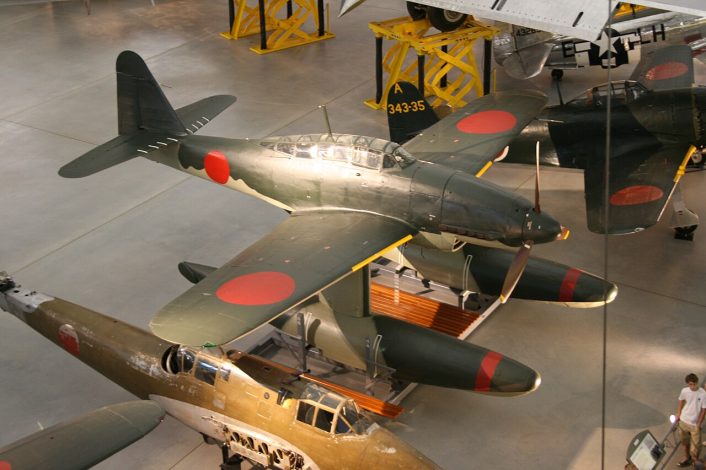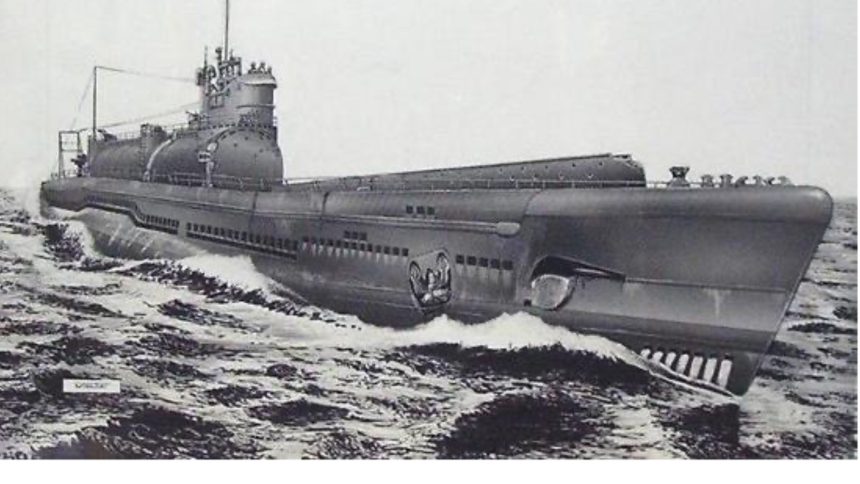Seemingly from a James Bond film or a favorite Science Fiction novel, aircraft-carrying submarines did indeed exist and were deployed by several nations.
Its late 1945, at around 03.00 hours off the coast of Ecuador, the giant submarines floated silently on the glassy surface of the moonlit Pacific Ocean. The decks of the vessels were a flurry of activity as huge hangar doors were swung open, and the aircraft housed inside moved out onto the catapults, their folded wings, tails, and elevators extending and locking into place.
One by one the ten aircraft were launched in under an hour from the four submarines, roaring into the skies for an attack at dawn. Pearl Harbor was about to be repeated, this time on the Panama Canal, with a devastating blow to the Atlantic side locks of the canal, putting the crucial waterway out of service to the United States and her allies for months.
The above story was a planned attack that never occurred due to the fortunes of war; however the described aircraft carrying submarines did indeed exist.
Early efforts
As early as World War One, Germany was experimenting with the idea of an aircraft-carrying submarine. In 1915, a Friedrichshafen FF-29 floatplane was strapped to the decks of a German U-boat, U-12, and ferried out to sea approximately thirty miles. The sub then partially submerged allowing the floatplane to float away from the deck and take off. It worked but the problem was the aircraft had to endure ridding on the deck of a low in the water U-boat, with the weather and sea being a hazard.
In addition to that, the submarine could not submerge without losing the aircraft in the process. The project was deemed impractical and shelved. The war ended before planned larger submarines with a special compartment for assembling, disassembling, and storage of floatplanes could be built.
The British had also investigated the idea of a submarine carrying aircraft in 1916, with the purpose of intercepting German airships over the channel that were terrorizing London and other cities. The E22 carried two Sopwith Schneider floatplanes on deck. However, they suffered the same issue as the Germans, with the aircraft being exposed and the sub unable to dive without loss of the aircraft.
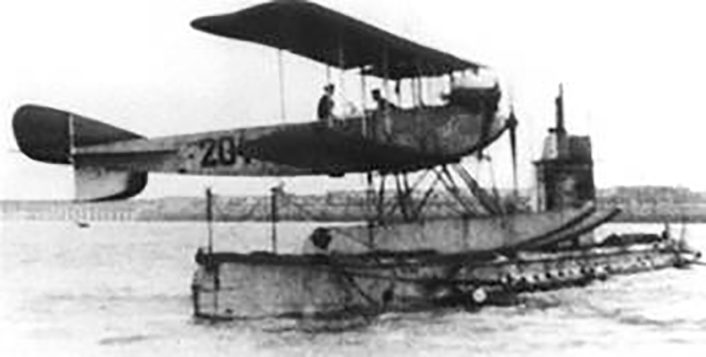
The 1920’s
In 1927 the British tried again, with the submarine M2. M2 carried a Parnall Peto floatplane, in a hangar that replaced the 12 inch gun and its compartment that the boat was originally built with. A catapult on deck for launching the aircraft was in front of the hangar.
The plane was to scout ahead of the fleet, could return, land beside the vessel, and be hoisted back onboard. The Parnall Peto had folding biplane wings, a two man crew, and flew at a top speed of 113 mph. The service ceiling was around 11,000 ft The M2 sank in 1932 and the idea was abandoned.
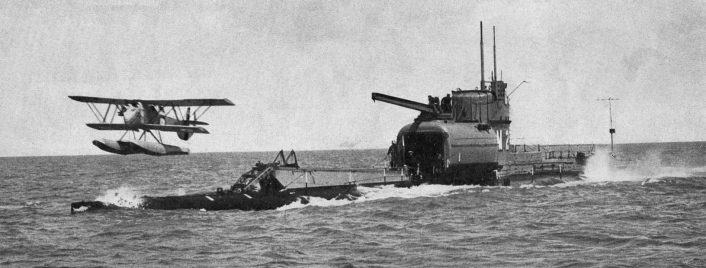
Not to be outdone at about the same time period as the British, the French were also experimenting with aircraft onboard submarines with the Surcouf. Launched in 1929, the Surcouf was the largest submarine to date, and it was a gunboat as well as aircraft carrier. It was armed with two 8 inch guns in a twin turret forward of conning tower, and also carried twelve torpedo tubes. In a watertight hangar aft of the conning tower she carried a Besson MB-411 floatplane.
The idea was to use the floatplane as a spotter for the fifteen-mile range of the large guns when conducting shore bombardment or engaging surface vessels. The Besson was a two-seat low wing monoplane, with a top speed of 118 mph and a service ceiling of around 16,000 ft It had a range of 249 miles. The Surcouf proved cumbersome and unreliable and the vessel was lost with all hands in 1942.
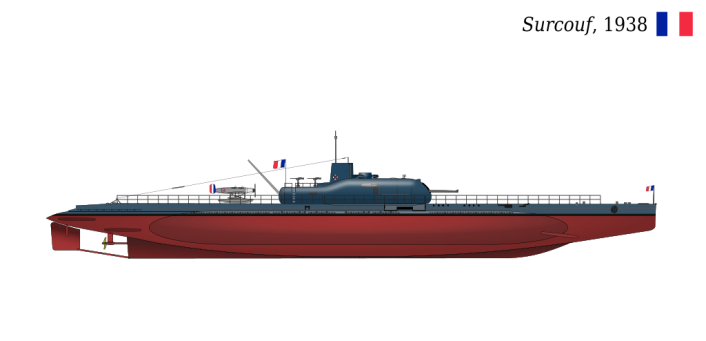
The United States also experimented with the concept of an aircraft-carrying submarine in the 1920’s using the S-1 boat. A cylindrical pod was attached to the deck allowing the storage of a small disassembled floatplane. The biplane scouting aircraft was a Martin MS-1 that could be disassembled and stowed in the pod, the boat would surface, the aircraft assembled on deck, and then the submarine would submerge the deck enough to allow the aircraft to float away and take off.
The aircraft could be recovered, disassembled, and stowed away again allowing the submarine to submerge. The MS-1 had a top speed of around 100 mph and a range of 200 miles, and a service ceiling of around 8,500 ft. The Cox-Klemin XS-1 and XS-2 were also used in these experiments. The X-2 was a scout biplane with a speed reaching 115 mph and a ceiling of 11,300 ft. With the loss of the British M2, the concept was abandoned and all of the Martin and Cox-Kleimin aircraft were later scrapped.
Other nations including Italy and the Soviet Union had plans on the drawing board for aircraft carrying submarines as well as special aircraft being designed for such vessels. However, the idea proved problematic, the military usefulness was in question, and the plans were abandoned.
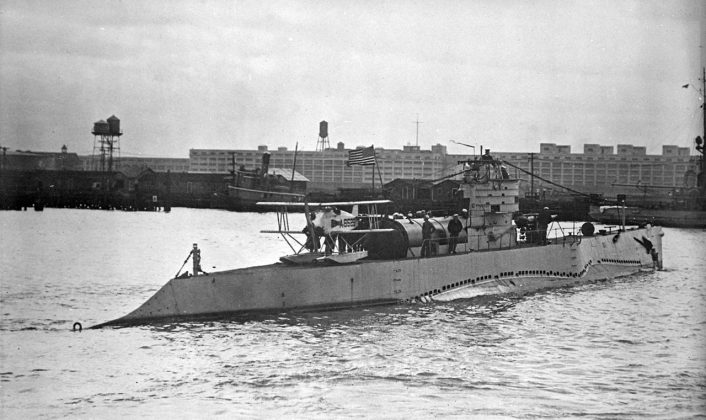
Imperial Ambitions
The nation with the most success with aircraft-carrying submarines was Imperial Japan. Japan rigorously pursued, designed, and built several large aircraft carrying submarines beginning in the 1930’s, completing over forty boats in all.
The IJN (Imperial Japanese Navy) began experimenting with floatplanes on the older I-51 submarine in 1929. A hangar was installed along with an aircraft crane in 1931 and later followed by a catapult to launch the aircraft in 1933. The boat carried the Yokosuka designed 2-Go and 2-Go Kai floatplanes.
These prototype aircraft eventually became the E6Y. The production model was contracted to be built by Kawanishi, and it was a single-seat biplane aircraft with a top speed of 103 mph and a range of around 370 miles. The service ceiling was 15,700 ft and it carried no armament.
I-5 was a modified I-1 class, finished in July of 1932, and was the first Japanese submarine in service to carry an aircraft. Fitted with two cylindrical containers, it also carried the E6Y floatplane. The plane was removed from the cylinders, assembled on deck and lowered into the water for takeoff. A catapult was added later.
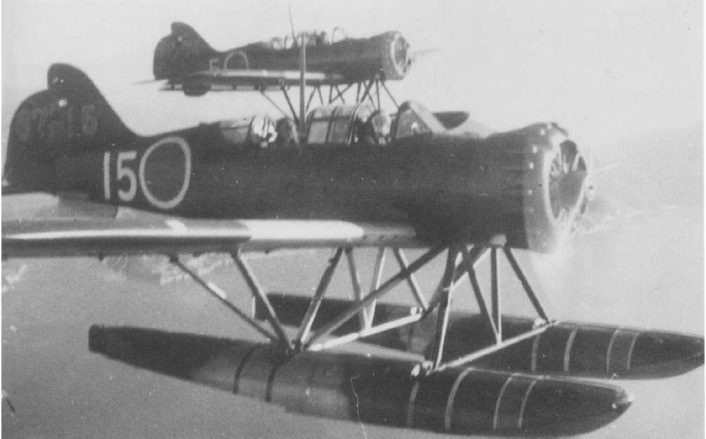
Submarine I-6 was a one-off with both a hangar and a catapult, also carrying the E6Y floatplane. I-7 and I-8 were constructed with both a hangar and a catapult as well, but carried the Watanabe E9W reconnaissance biplane. The aircraft carried a crew of two with a top speed of 144 mph, a range of 454 miles, and a service ceiling of over 22,000 ft. It carried a single 7.7 mm machinegun.
Again, the aircraft was disassembled, placed in the hangar, then quickly reassembled and launched. The biplane could be assembled in two and a half minutes and taken down for storage in a minute and a half. This greatly decreased the vulnerability of the submarine being surfaced while launching aircraft.
Three of a planned total of five I-9 class subs were completed: the I-9, I-10, and I-11. The aircraft hangar was moved forward of the conning tower and was part of the tower itself and could be accessed from inside the hull, with the catapult in front to allow the forward movement and speed of the boat to assist in launching aircraft. These submarines carried the Yokosuka E14Y “Glen” floatplane.
A single I-12 class was completed, with the same hangar/catapult configuration and aircraft as the I-9 class, the main difference being lower powered engines in hopes to simplify and speed up construction.
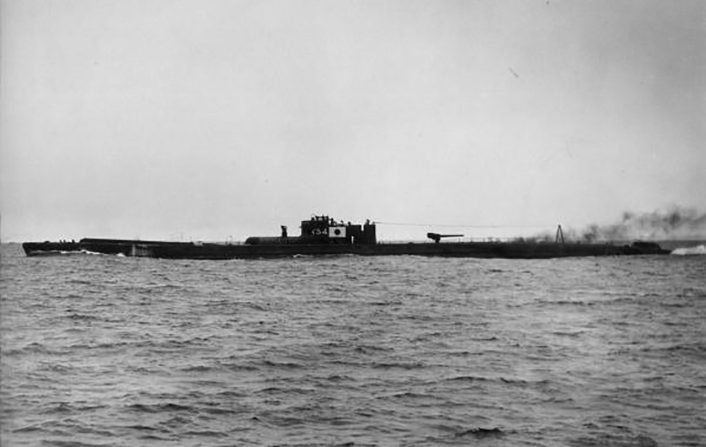
In the final two years of World War Two, the I-13 and I-14 came into service. These boats had a larger hangar that offset the conning tower, stowing two of the new Aichi M6A Seiran attack aircraft. A catapult was mounted forward and two folding cranes allowed for aircraft recovery. The submarine was also armed with a 140 mm deck gun, six torpedo tubes, and three 28 mm anti-aircraft guns.
The Aichi M6A was a noted departure from previous submarine-launched aircraft. This floatplane was designed from the beginning to be an attack bomber, not a scout plane. It could carry over 1,800 lbs of bombs, had a single rearward firing defensive 13 mm machine gun, a crew of two, and was of low wing monoplane construction. The wings folded flat along the fuselage, the tailfin and rudder swung to the side, and the elevators all folded for storage. The aircraft could be unfolded and launched in less than ten minutes. It had a top speed of 295 mph, and the twin floats could be jettisoned before an attack.
Twenty of the Type B1 Japanese aircraft carrying submarines were constructed, also known as the I-15 class, carrying a single Yokosuka E14Y floatplane, code named “Glen” by the Allies, in a watertight hangar in front of the conning tower. The wings, floats, and top of the top tail section detached for storage. A catapult on the forward section of the deck launched the aircraft. The E14Y had a top speed of 154 mph, a crew of two, and a range of 547 miles. The aircraft could carry 168 lbs. of bombs and was armed with one rearward firing 7.7 mm machinegun.
The E14Y was used in a somewhat unfamiliar story of World War Two. Launched from the I-25 submarine off the coast of Oregon on Sept. 9, 1942, a single E14Y dropped two incendiary bombs on a forest in Oregon near Brookings, in an attempt to ignite a raging forest fire. The damage was minimal but it would mark the first time in history that an aircraft had bombed the contiguous United States. A second raid was conducted on Sept. 29 with similar results. The events became known as the “Lookout Air Raids.”
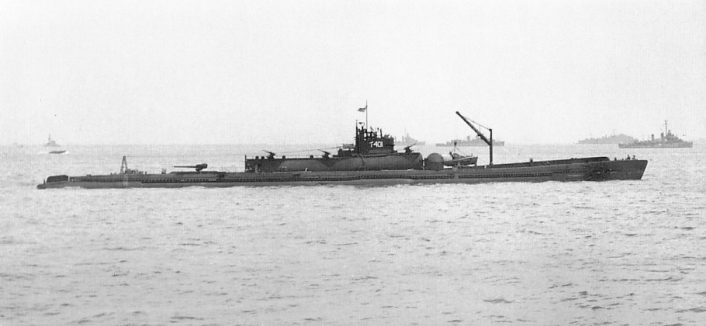
Six of the I-40 and twenty-one of the I-54 class boats were also built with a hangar forward of the conning tower carrying a single E14Y floatplane. These submarines also had the catapult system in front of the hangar and were very similar to the I-15 class.
1944-1945 saw the height of the design and concept of the aircraft carrying submarines with the I-400 class. Of a planned eighteen, only three were completed: the I-400, I-401, and the I-402, the latter completed too late to enter service. These boats were large, the largest submarines ever built until the arrival of the ballistic missile submarine.
With a length of four hundred ft. and a beam of over thirty-nine ft, they had a range of around 40,000 nautical miles. Carrying eight torpedo tubes and one 140 mm deck gun, they housed three of the Aichi M6A attack bombers in cylindrical hangars that offset the conning tower.
The original design was modified from hangar space for two aircraft to three. Again a catapult on the forward deck launched the aircraft. Plans were made for I-400 and I-401 in launching the aforementioned attack on the Panama Canal in conjunction with I-13 and I-14, a planned attack on the United States carriers at Ulithi Atoll, and even a plan to launch aircraft off of southern California and drop infested fleas in hopes of spreading serious disease infections on the population was drawn up. The war ended before any of these could be carried out, with Japan surrendering on August 15, 1945, and thus ostensibly ending the reality of aircraft carrying submarines.
